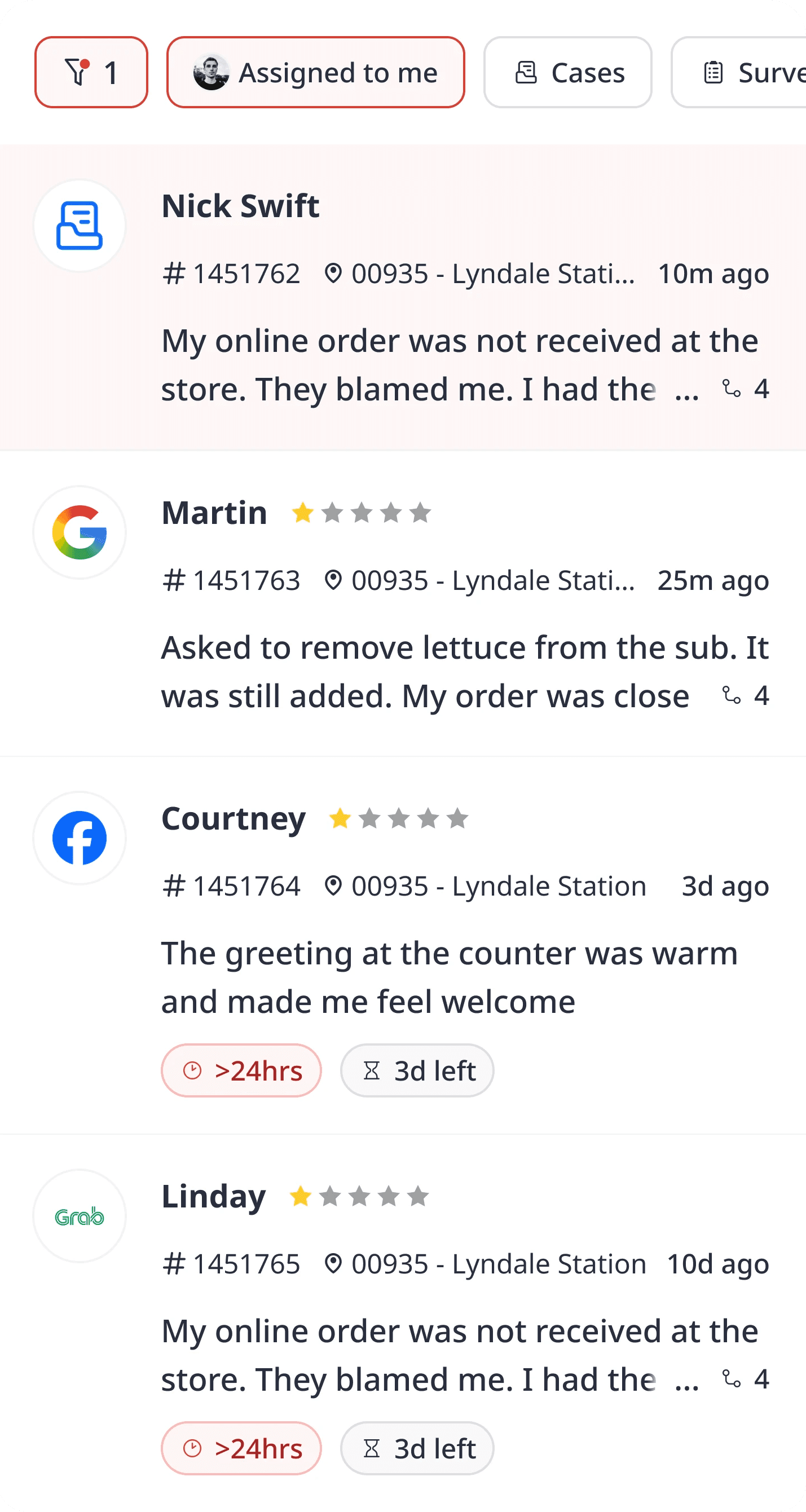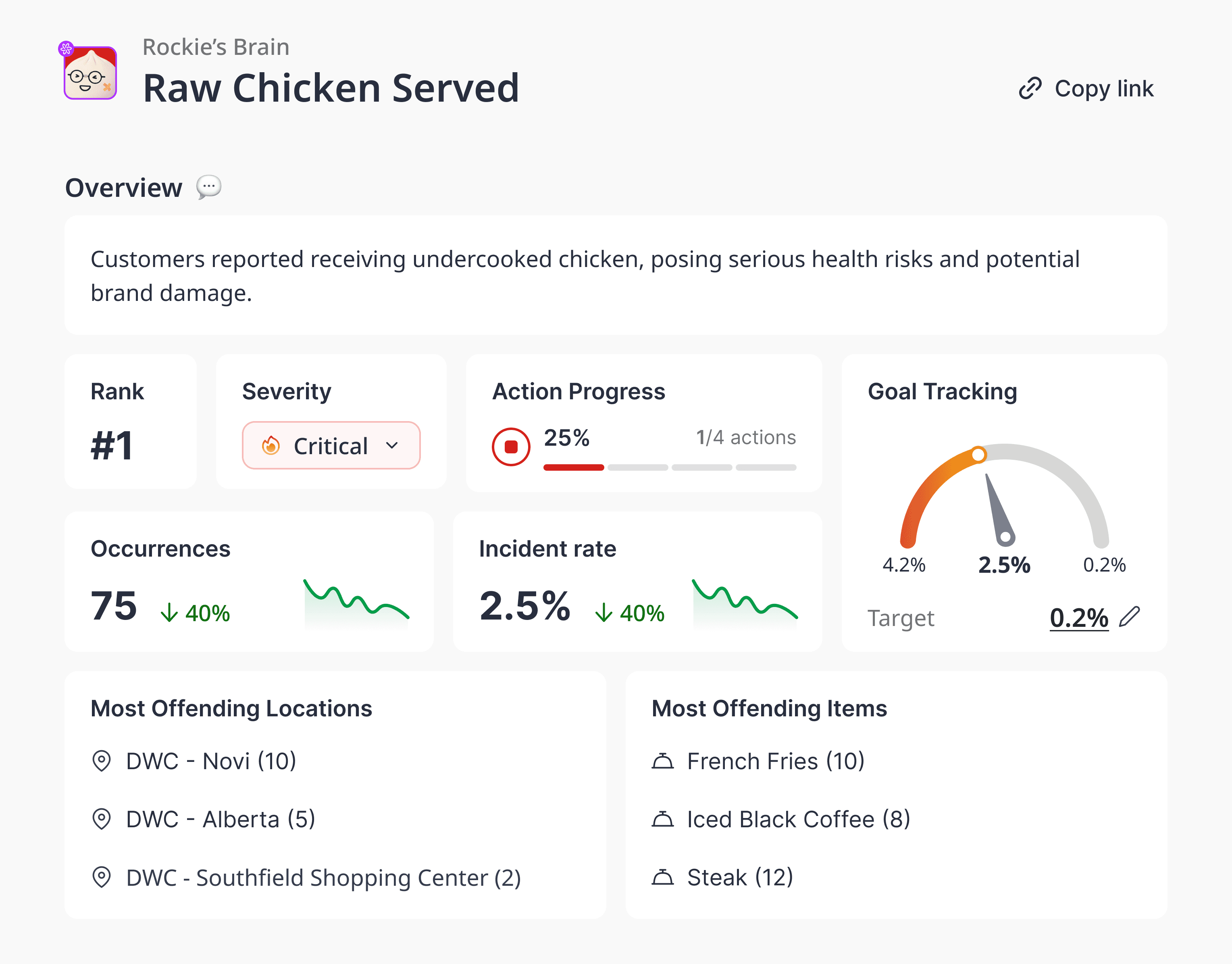
Customer Experience
John Lim
Sep 24, 2025
Reducing Incidents Improves Revenue. Here’s How To Do It At Every Location
Contents
Every service slip-up has a cost. Industry research shows that customers who have a poor experience are more likely to choose a competitor next time. And when incidents keep repeating, you’re not just losing one visit you’re losing lifetime revenue.
When you’re running multiple locations, small operational problems can quietly pile up. A recurring food quality issue, slow service at certain hours, or a hygiene slip in just one store can chip away at brand trust across your entire network.
The challenge: spotting patterns before they impact revenue
Operators often rely on anecdotal reports or scattered feedback to understand what’s going wrong. Without structured incident data:
Root causes stay hidden
Issues repeat without resolution
Recovery is reactive instead of proactive
That’s where Incident Analytics and Rockie, your AI Analyst, change the game.
How Momos helps you fix issues faster and keep them fixed
Momos Incident Analytics brings together every incident report from reviews, surveys, and other feedback sources, categorizing them into clear types (e.g., Food Quality, Staff Behavior, Service Speed).
Rockie adds the intelligence:
Identifies trends: from new, one-off issues to recurring, widespread problems
Recommends actions: based on your brand guidelines and industry best practices
Prioritizes by impact: so you fix the problems that affect revenue most
Tracks progress: showing if incident rates drop after actions are taken
How it works (step-by-step)
1. View incidents across all locations
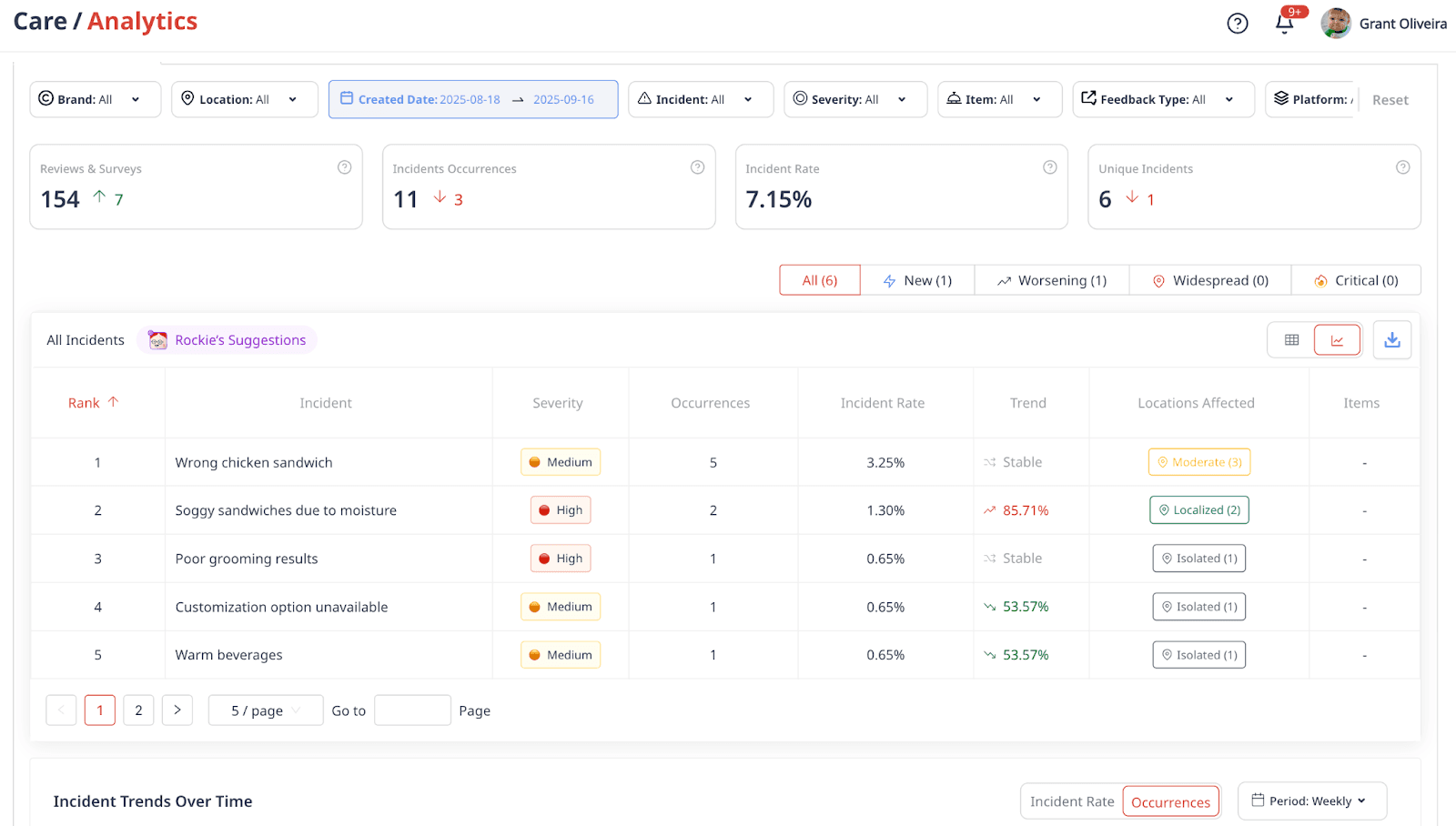
In Incident Analytics, see incidents grouped by type, frequency, and severity. Use labels like New, Recurring, Worsening, or Improving to focus on what matters.
2. Drill down by location or item
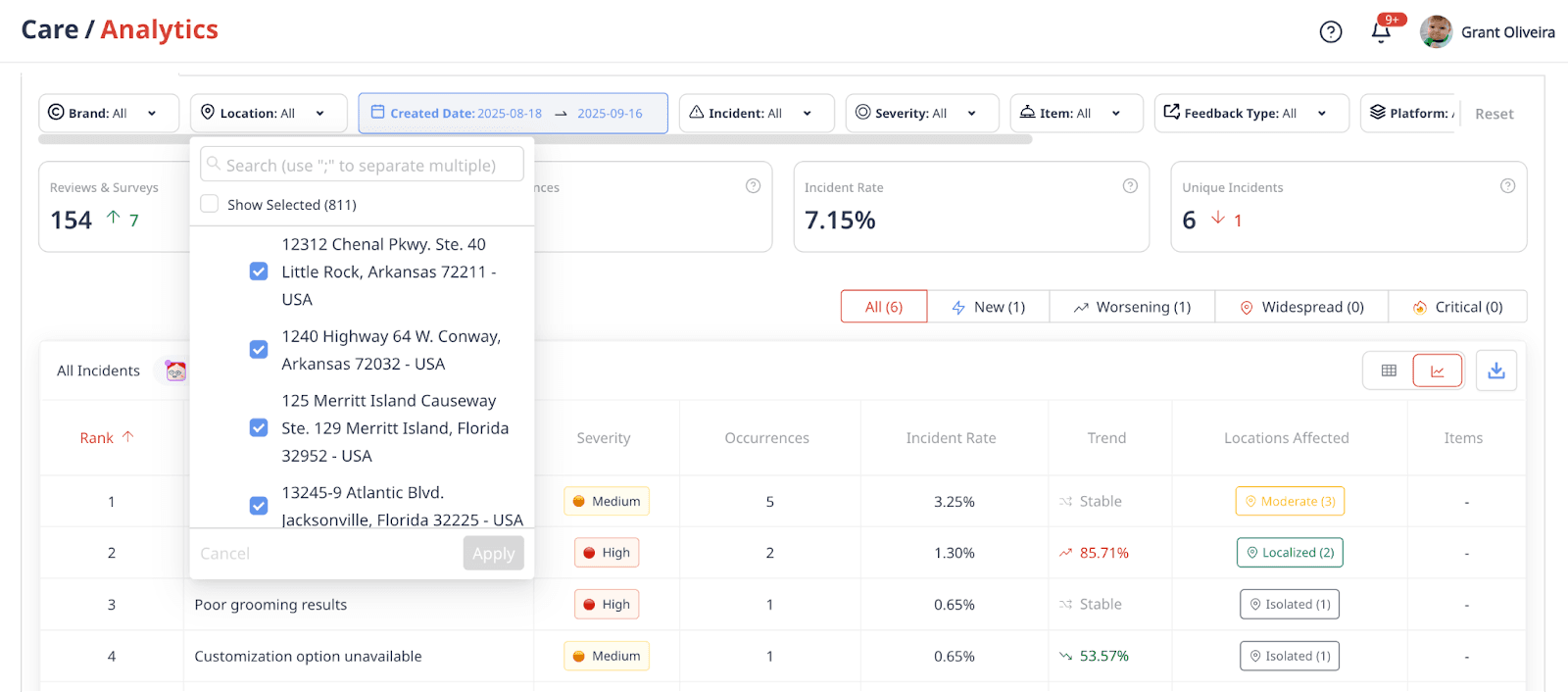
Click into a specific location to see its top incidents. You’ll get both the incident list and Rockie’s side panel with recommended actions.
3. Know exactly where incidents are happening
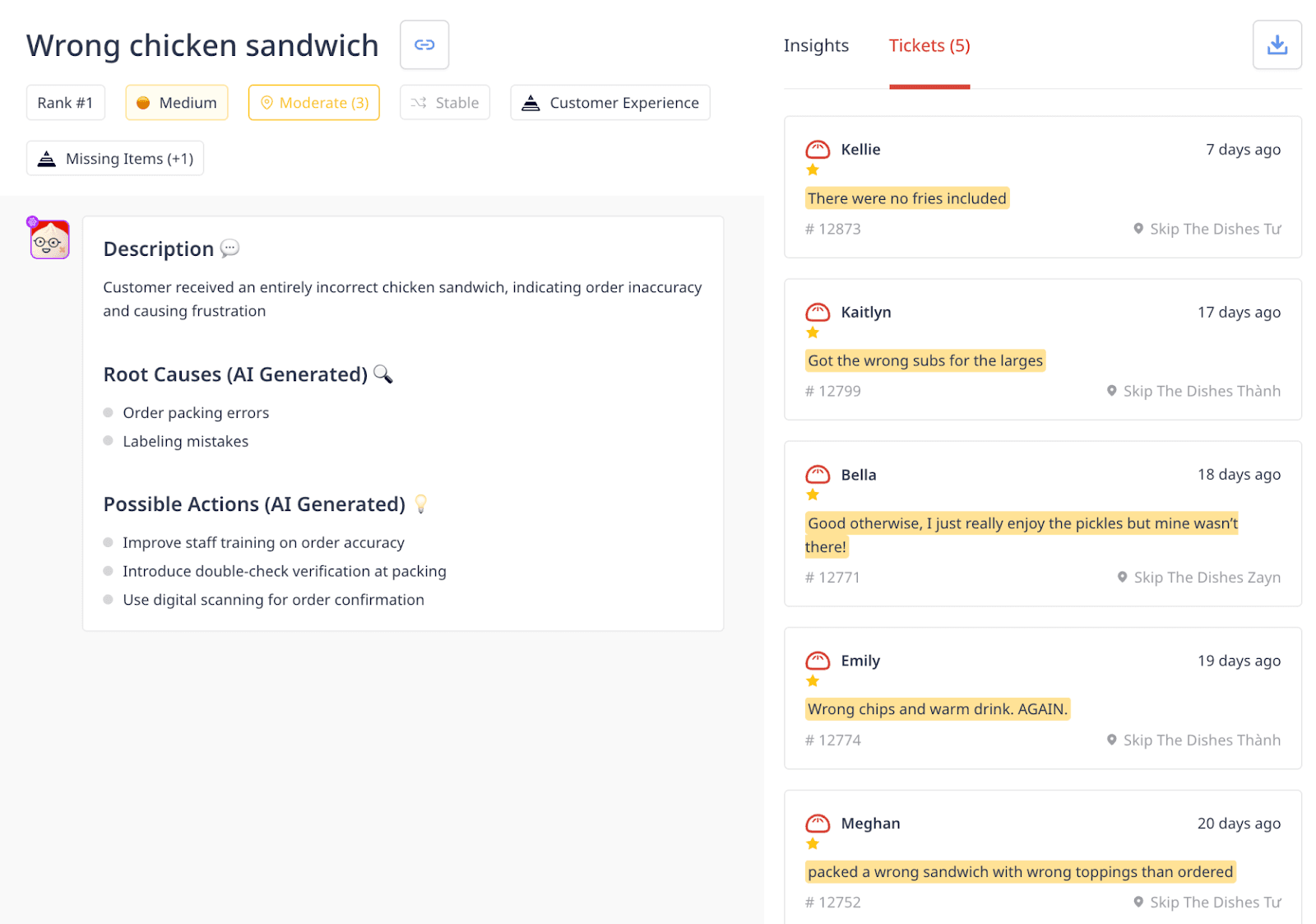
From the incident view, drill down to where incidents are happening. You can also track where these incidents based on their feedback sources and tickets.
4. Monitor the impact
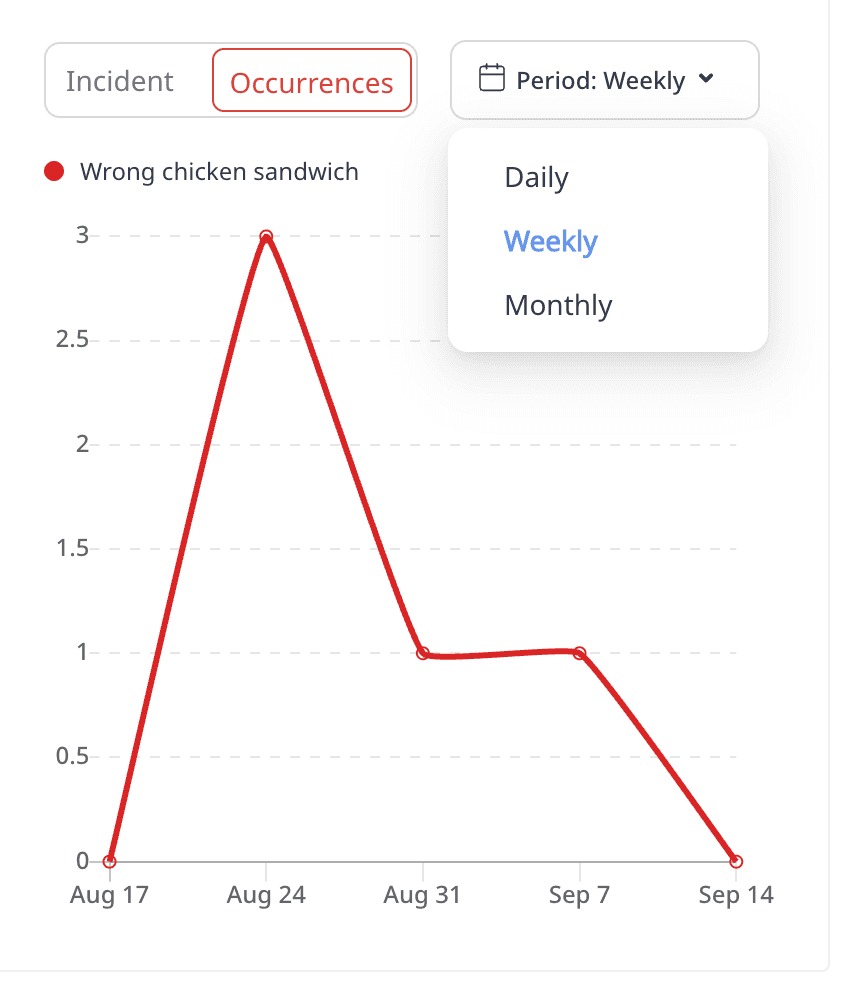
Incident Tracking compares before-and-after rates so you can see if the fix worked and where to follow up.
Pro tips
Upload your brand guidelines so Rockie’s recommendations are always on-brand.
Start with the top 3 high-impact issues instead of trying to fix everything at once.
Look for cross-location patterns, a recurring issue in multiple stores often points to a process gap.
Ready to reduce incidents and grow revenue?
Already a customer? Open Incident Analytics in your dashboard today.
New to Momos? See how AI can help you fix operational issues before they hurt your revenue. Sign up
Frequently Asked Questions
What counts as an incident?
Any operational issue flagged in feedback — from food quality complaints to service delays or facility concerns.
Does Rockie fix incidents automatically?
No. Rockie recommends brand-aligned actions, but your team decides how and when to implement them.
Can I track if my actions worked?
Yes. Incident Tracking shows before-and-after incident rates so you can measure the impact of your fixes.
Can incidents be removed if they’re misclassified?
Yes. You can remove tickets from an incident so they don’t skew the data.





